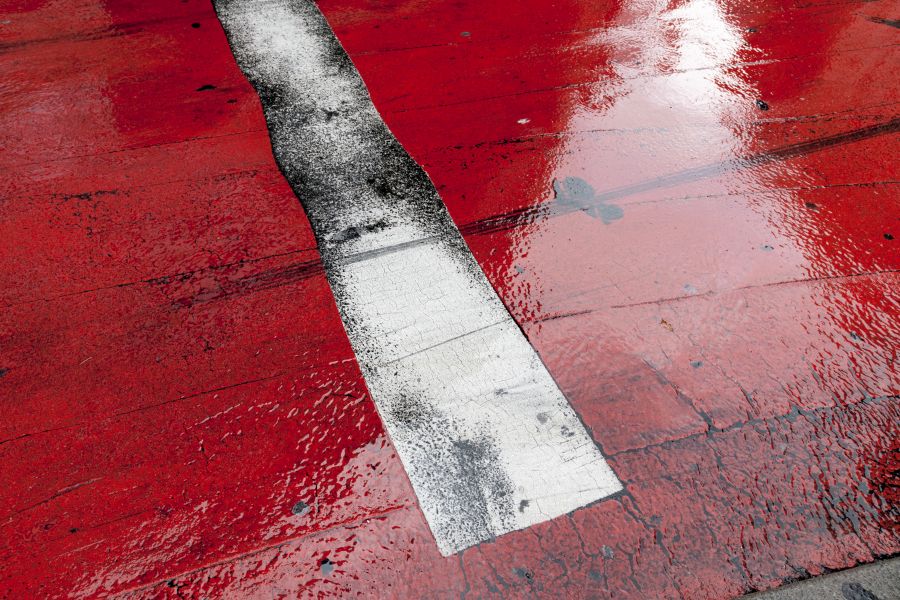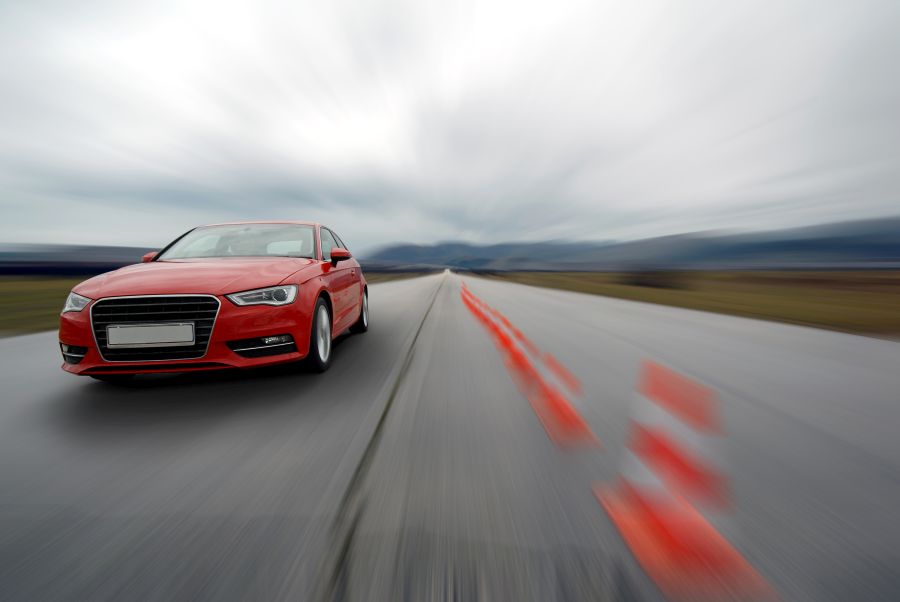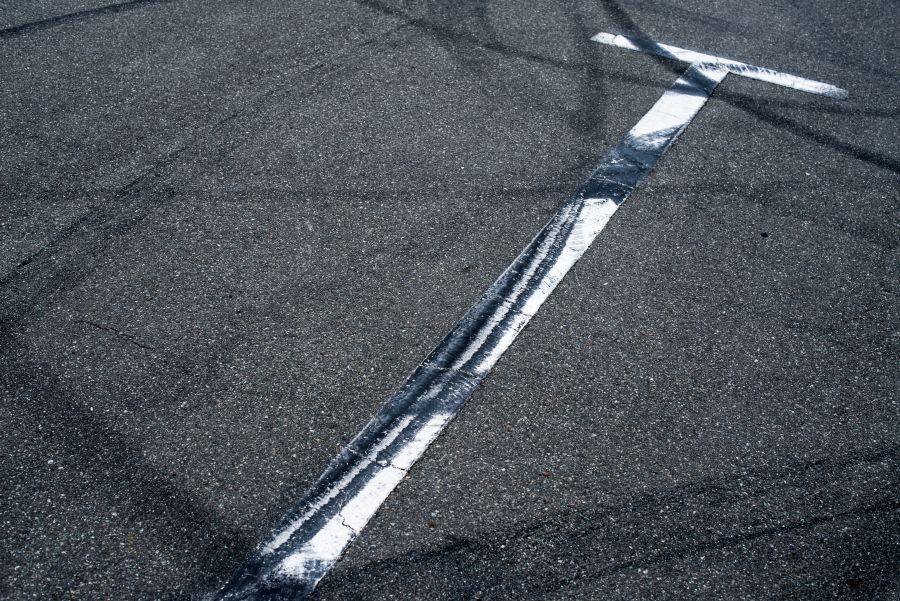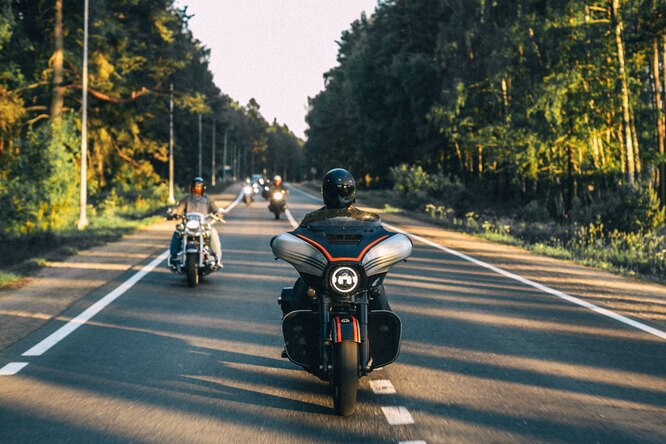
The braking distance of a motorcycle and a passenger car, depending on the total braking distance
Content
- Stopping Distance - A Formula You Can Use
- Stopping distance - a calculator showing the distance traveled
- Total braking distance - how is it different from braking distance?
- Motorcycle braking distance - how is it different from other vehicles?
- The stopping distance of a car - what parameters affect its length?
- Frequently Asked Questions
If you had the opportunity to test your car on the shunting area, you would notice that at street speeds, the braking distance is often tens of meters! Very rarely you won't see an obstacle until you're a meter or two in front of it. However, in practice it can be seen that the distance traveled when applying the brake is often too large.
Stopping Distance - A Formula You Can Use

How to calculate stopping distance? This can be derived from the formula s=v2/2a where:
● s – stopping distance;
● v – speed;
● a – braking deceleration.
What can you infer from this pattern? Approximately the distance a car travels when braking doubles in proportion to its speed. For example: if you are driving at a speed of 50 km / h, then the braking distance of a car is even 30 meters.! This is a very long distance, given the congestion of cities and towns.
Stopping distance - a calculator showing the distance traveled
What could be more inventive than numbers? To understand the stopping distance at the moment and under certain conditions, you can use ready-made calculators. You can't fool the math, so by entering specific data, you will know how much distance you will travel before completely losing speed in various conditions.
The braking distance of a car on an example
An example can be used here. Let's say you're driving on a route with a speed limit of 50 km/h. The weather is good, the tires are in good condition, but you are already a little tired. In addition, the asphalt is wet after rain. Several variables can be included in the stopping distance calculator:
● average delay;
● movement speed;
● distance to the obstacle;
● intensity of the braking process;
● road level;
● driver reaction time;
● reaction time of the braking system.
Braking distance at 50 km/h is likely to be 39,5 meters depending on your physical condition and terrain. Although it may not seem like much, every blink of an eye brings you closer to an obstacle and, as a result, can cause tragedy.
Total braking distance - how is it different from braking distance?

In the beginning, you need to distinguish between two concepts - braking distance and total braking distance. Why? Because it's not the same. The braking distance includes only the distance necessary to bring the vehicle to a complete stop from the moment the braking process begins.. The total braking distance is the distance traveled from the moment an obstacle is recognized to the moment the brake pedal is pressed and from the moment it is pressed to the beginning of the braking process. Although you might think that the statistical second required for a reaction means nothing, but at 50 km / h it is almost 14 meters!
Motorcycle braking distance - how is it different from other vehicles?
You might think that because a two-wheeler is lighter, it should slow down faster. However, it is not. You can't fool physics. The distance required to bring the vehicle to a complete stop depends on the skill of the driver (ability to avoid skidding), the type of tires used and the quality of the road surface. Weight does not affect the final distance. What does this mean? For example, in the case of a bicycle, scooter and racing car, which will have the same driver and the same tire compound, the braking distance will be the same.
The stopping distance of a car - what parameters affect its length?
Just above, we briefly mentioned what things affect the length of the braking distance. They can be expanded a bit to see how to behave in specific situations.
Tire quality
While it goes without saying, as some say, tire condition is still worth talking about out loud. Almost 20% of all road traffic accidents caused by technical malfunctions of vehicles were related to improper tire condition. That's why it's time to change your tires when you notice that the tread is no longer up to par. What else can be done so that the braking distance is not so long? Do not drive with winter tires in summer or summer tires in winter. While "switching" old tires can be economical, compared to the cost of repairing a car after an accident, this is a tiny amount.
Surface condition and type

Is there a surface that brakes better than very good quality asphalt? Yes, it's dry concrete. However, in practice, most often asphalt is poured on almost all streets and highways. However, even such a surface can be fatal if it is wet, covered with leaves or snow. How does this affect braking distance? In the example above, the difference in asphalt condition shortens the braking distance by almost 10 meters! In fact, this is a change of ⅓ from ideal conditions.
The situation is even worse with the snow surface. It would seem that innocent white snowflakes can double the braking distance, and ice - up to four times. What does it mean? You will never slow down in front of an obstacle that is 25 meters away from you. You will stop a few tens of meters further. The stopping distance of a passenger car, like other vehicles, largely depends on the conditions in which you are driving. One can only guess whether you will drive at a speed of 50 km / h in settlements with precipitation and sub-zero temperatures.
Car performance level
This is a parameter that has not yet been paid attention to. How does the technical condition and condition of the car affect the stopping distance? Of course, the tires described above are one factor. Secondly, the condition of the suspension. Interestingly, shock absorbers have a huge impact on the behavior of the car when braking. The braking distance is longer if the vehicle has an uneven distribution of tire pressure on the road. And with one of the shock absorbers not working, it is not difficult to get such a phenomenon.
What's more, incorrect toe-setting and all geometry results in the wheels not being properly aligned on the surface. But what about the direct factor, i.e. brake system? At the moment of sharp braking, their quality is decisive. Usually such situations do not happen so often when you have to use the maximum braking power. Therefore, daily it is better not to disturb this system by excessive pressing on the pedal.
What can be done to reduce the braking distance?
First of all, take care of the good technical condition of the car and do not exceed the speed limit. Make sure you have enough brake fluid and use engine braking whenever possible. And most importantly, attention! Then you increase the likelihood that you can stop the vehicle quickly enough.
Frequently Asked Questions
What is the duration of the braking reaction?
Statistically, the reaction time of the driver and the start of braking is 1 second.
Does tire pressure affect stopping distance?
Yes, tire pressures that are too low can significantly increase your vehicle's stopping distance.
What is the braking distance at a speed of 60 km per hour?
At a speed of 60 km / h, the stopping distance of the car is 36 meters.
What is the stopping distance at 100 km/h?
At this speed, the braking distance is 62 meters.

